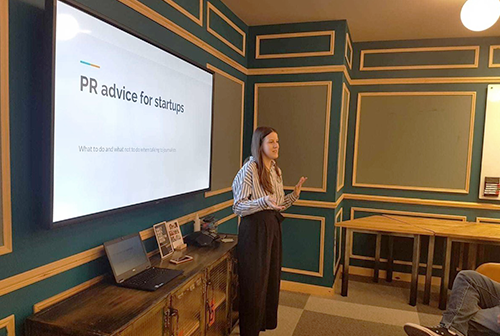How to impress an Evening Standard journalist

Written by Sofie Skouras
Last week we launched our first Power of PR event during London Tech Week. The event was about communications, why it matters and outlined tips for startups from the amazing Amelia Heathman, technology reporter at Evening Standard and our very own Sophie Hodgson, head of technology at Aspectus.
It was fantastic to see so many people and for those of you who weren’t able to come due to the event being fully booked, we’ve summarised Amelia’s top tips below. Some of these pointers might seem simple, but the fact she had to make these points highlighted they aren’t followed by all:
Step 1: Do your homework
What platform is the journalist writing for? Is it an online publication or a printed publication? For instance, the Evening Standard paper and website have two completely different teams – similar to MailOnline and Daily Mail – so approaching Amelia with a story for tomorrow’s paper will be of no interest; she writes for the online site.
Also, think about what they write about. Take Amelia. Her interests are tech for good, women in tech, fintech and smartphones – so a company or news that hits any of those areas is going to be much more successful. Useful places to look to understand a reporter’s remit is their Twitter feed, recent stories they’ve written and / or their Twitter bio.
Step 2: Getting in contact with journalists
Interestingly Amelia cautioned against the use of social media when pitching journalists. Personally, she doesn’t like Twitter pitches (bar a couple of exceptions where she said it worked well). But this isn’t a hard and fast rule for all.
Many journalists have their DMs open for that reason. Again, it’s about taking the time to understand the journalist’s interests and how they like to be contacted.
She also encouraged email follow-ups (a first time I’ve ever heard a journalist say this!) She promised the audience she reads all her emails, but due to the sheer volume of them, can sometimes forget to reply. Following up with her first thing in the morning – before her 9am editorial meeting – is the best bet.
It’s also worth noting the print deadline for the paper – which is 11am – so avoid sending anything on the day as it’s unlikely the journalist will have time to cover it. It’s best to get in touch a few days beforehand to give them a heads up on it. Each publication has different deadlines they work to so, do your research to find out what they are and make note of them.
Step 3: Crafting the perfect pitch
You’ve done your research, you know how and when to contact the journalist, next up is figuring out exactly what to say. Amelia, like most journalists, likes pitches to be brief, to the point and using bullet points. The essential things to include are:
- Who are you?
- What are you doing?
- Why should Amelia (or any journalist) care?
- Any embargo times to be aware of?
The third bullet is arguably the most important, so take the time to think about this point, pulling in the areas of interest the journalist has.
Step 4: During the interview
So you’ve bagged yourself an interview, great. Now it’s time prepare for it, starting with what spokesperson you chose to put forward.
If you put your marketing person forward it can give off the wrong impression – for instance, that the founder is ‘too busy’. But if the founder isn’t comfortable with media interviews, and your marketing person is actually much better placed, then make that clear to the reporter.
Another tip she gave, and something we often tell clients during media training sessions, is to decide what five main points you want to put forward are. Focus on those in the interview rather than reeling off a list of things from a sales pitch the journalist is likely not to use.
And of course, don’t say something in an interview that the journalist cannot print or post online. You also won’t be able to ‘review’ the article after the interview either (unless it’s fact-checking something complex), so don’t ask the journalist for this; it’s not an advertorial piece.
Step 5: Get your house in order
Many companies aren’t making the most of the ‘press’ section of their websites. This should be filled with press packs, contact information, product images (landscape and portrait – landscape images are ideal for the Evening Standard), stock images and any videos. It makes journalists’ lives much easier knowing they can quickly access a headshot without having to chase and lock down one themselves and the likelihood of coverage higher.
Step 6: Manage expectations
The news agenda moves so fast that often stories get bumped. This can happen after the interview has taken place and you’ve spent the time researching and creating the perfect pitch note. If this happens, it’s not the end of the world. It’s fine to ask the journalist what happened to understand in this situation.
And the good news is you’ve still built that relationship with the journalist in the process which is invaluable and means you’ll have a warmer lead next time.
Ultimately, you have to be in it to win it with comms, and a relentless attitude to these things is absolutely needed.
Get in touch if you’d like to find out more about how we work with startups or you’re interested in getting comms support: sofie.skouras@aspectusgroup.com

